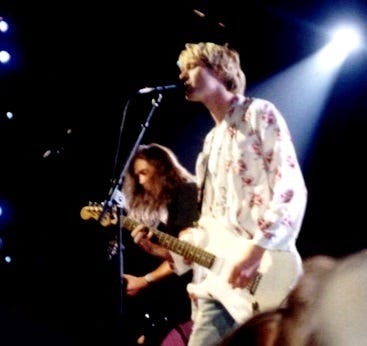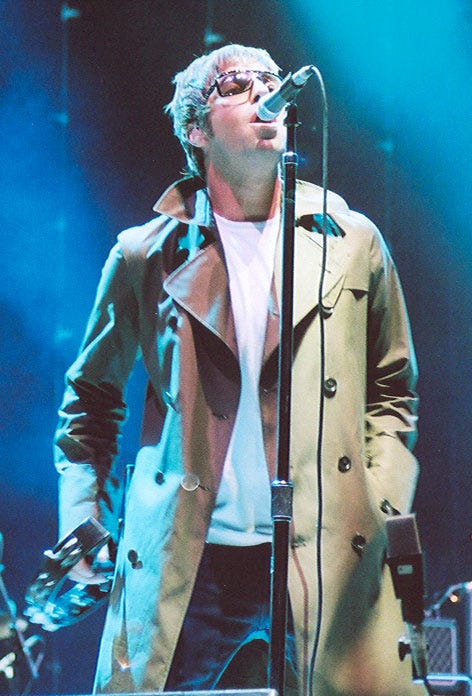RISE OF 90s ALTERNATIVE MUSIC
The rise of alternative music and the independent record label was a major trend in the 1990s. Coined in the 1980s, the term ‘alternative’ was used to describe artists on independent labels who were considered unfitting for mainstream genres. Embraced by the masses during the last decade of the 20th Century, alternative music’s popularity over mainstream music had significant influence on the future of the industry. While the initial trend saw a decline not long after its commencement, its foundations proved beneficial in aiding its continuation, just in different forms. Through discussion of the inception and evolution of this trend, its affect on the industry over time can be displayed. The future forecast for this trend can also be examined, particularly in terms of independent music and the seeming irrelevance of major labels in todays society.
According to the Oxford University Press, a trend is defined as “a general direction in which something is developing or changing.” The 1990s was a decade bursting with countless trends, however, possibly the most charismatic, progressive trend was the rise of alternative music. Emerging from the 1980s independent music scene and consisting of a variety of sub-genres, alternative music first encompassed the likes of Britpop, rock, indie pop and perhaps most notably, grunge. Many artists considered alternative during the 1980s received exposure only through word of mouth and the airwaves of college radio stations. They were “cult” acts signed to independent labels and were considered weird by the mainstream. While this allowed for a robust and inventive underground, it also developed a hunger for a future where that which was regarded good was popular and vice versa. Things began to change at the beginning of the decade with the introduction of Nirvana, a grunge band from Aberdeen, Washington, to the mainstream music world in 1991. The grunge three piece were seen as new and exciting in an industry previously bereft of anything of the sorts. This introduction bought with it the hope of a new era where the music was the most important thing, bringing artists and audiences together. However, while some celebrated this as a revolution, others condemned it as a colossal sellout. Bands who had endured exile during the 1980s, deemed underground or punk, could now be heard on commercial radio stations and television or in shopping centres. Craig Schuftan from the ABC describes this as an “intellectual balancing act, pulled off with the help of postmodern irony.”

The alternative music trend of the 1990s had a significant affect on the music industry and with that evoked a number of major changes. The introduction of grunge in 1991 is credited with murdering arena filling, stadium rock that dominated the industry in the 1980s. Nirvana in particular were a welcomed contrast to the over the top, pretentious acts that predated them, becoming well known for their raw, stripped backed style. The idea of alternative music was not a new one, but the success of Nirvana bought it to the attention of the mainstream. As the decade continued, more and more alternative artists saw mainstream success, changing the way people connected with music. This had a significant impact on festival lineups which became inundated with these independently signed bands. The trend initiated a subculture where outsiders came together in small, hidden venues, record stores, indie labels and photocopy stores. Another important effect of the genre was the introduction of the riot grrrl movement, a feminist punk rock movement that thrust more females into the industry. Bands like Bikini Kill and Sleater-Kinney fronted the crusade and had a meaningful impact on female listeners. The end of the decade saw a diversification of the alternative genre and various strains of “indie rock” attained success in the mainstream. Bands like The Strokes, The Killers and The White Stripes were achieving popularity, however, electronic music was on the rise, threatening the future of indie and alternative music. Rather than becoming extinct, the genre evolved into what we know it as today. The suggested staleness of post-grunge and rise of electronic music sparked the emergence of a new group of bohemians who utilised different strategies in order to get their music heard. The alternative music trend smashed through the mainstream, making way for self expression and strangeness that has come to be seen as natural in a modern industry where anyone can be a producer.

In today’s music industry, alternative artists generally do not receive the same mainstream success that bands like Nirvana or Oasis did in the 1990s. However, there does remain a thriving alternative scene, particularly with the creation of more and more boutique music festivals and small, independent music labels. Radio stations such as Triple J in Australia focus on playing artists that mainstream radio stations do not and community stations like Triple R magnify the importance of remaining independent. Festivals such as Mountain Sounds and Strawberry Fields, also in Australia, are located at parklands and farms, usually bordered by immaculate wilderness and focus on creating communities and forming relationships between patrons and the event. Where previously, people attended festivals on account of the big name line-ups, today it is more about the music, allowing many small, alternative bands a chance to play to large numbers of people, gaining valuable exposure. The trend of alternative music also evolved into the trend of releasing music without a label. This then extends to artists choosing to sign with smaller independent labels over major labels. The do-it-yourself ethos of the 90s alternative scene continues today, perhaps at an even greater magnitude. Platforms like YouTube and Soundcloud allow artists to release their own music and utilise the power of social media to gain a fan base. Where previously, artists relied on major labels to garner success in the music industry, a large number of bands and solo artists today are finding success on their own, suggesting the irrelevance of majors. YouTube has also offered a second life for a number of artists who thrived in the 90s alternative scene, displaying just how impactful those artists are. Anyone and everyone can become an artist today thanks to technology, social media and perhaps most pertinently, the fundamentals laid by the alternative music trend of the 1990s.
The rise of alternative music in the 1990s was a significant trend in the music industry that has since developed into a number of other substantial trends. From grunge to Britpop, the 90s alternative scene evolved throughout the decade, creating a significant impact on the music industry and evoking numerous changes. Responsible for trouncing pretentious stadium rock and making a space for the outsiders, alternative music lives on with a dedicated following all over the world. Taking note from the 1990s trend, many artists today choose to adopt the do-it-yourself philosophy, signifying a possible future demise of major record labels.
Feature image of Sonic Youth 1992 (Greg Neate)










This article was exceptional – the best I have found on this subject thus far! Thank you for sharing.